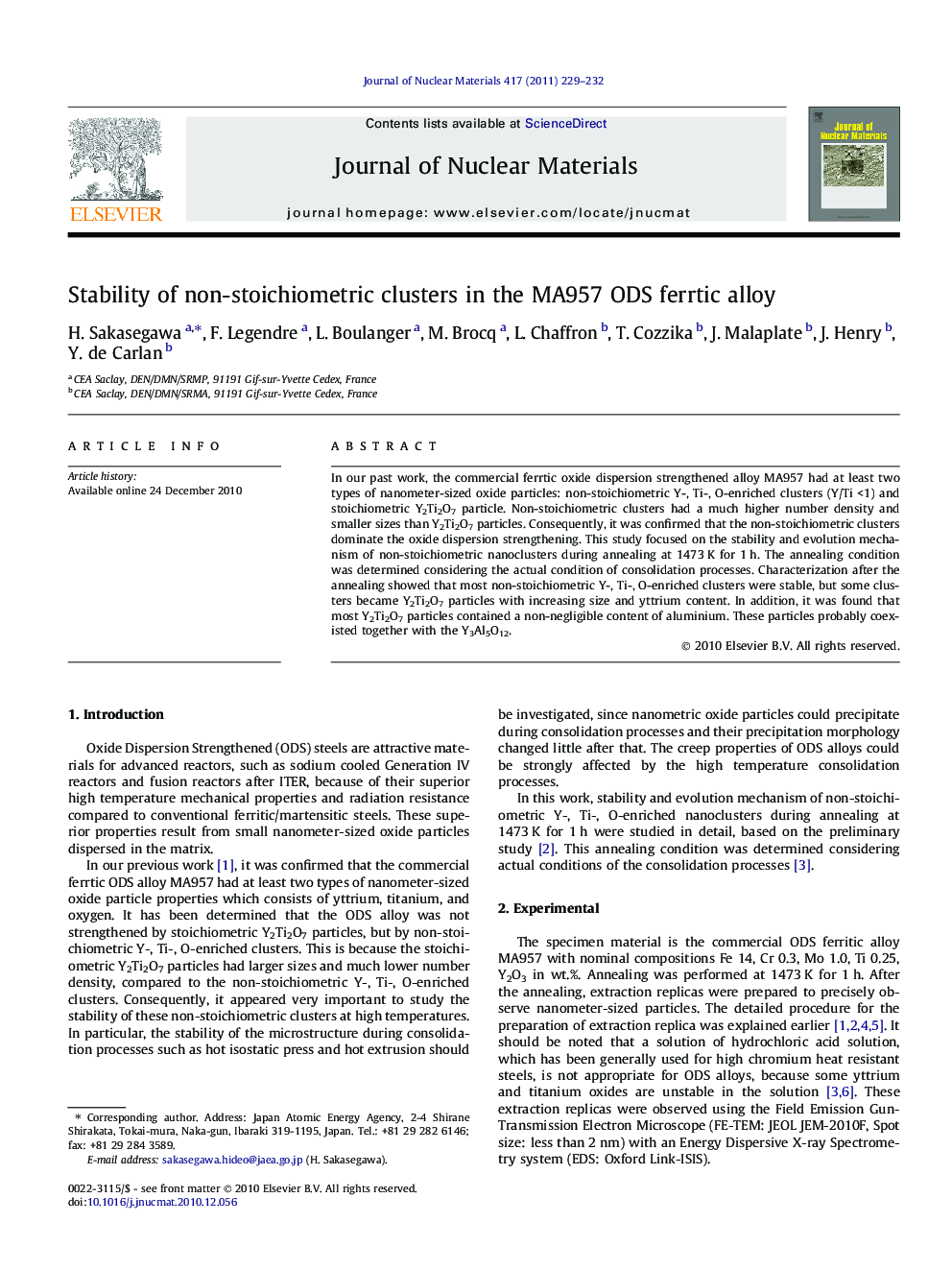| Article ID | Journal | Published Year | Pages | File Type |
|---|---|---|---|---|
| 1566612 | Journal of Nuclear Materials | 2011 | 4 Pages |
In our past work, the commercial ferrtic oxide dispersion strengthened alloy MA957 had at least two types of nanometer-sized oxide particles: non-stoichiometric Y-, Ti-, O-enriched clusters (Y/Ti <1) and stoichiometric Y2Ti2O7 particle. Non-stoichiometric clusters had a much higher number density and smaller sizes than Y2Ti2O7 particles. Consequently, it was confirmed that the non-stoichiometric clusters dominate the oxide dispersion strengthening. This study focused on the stability and evolution mechanism of non-stoichiometric nanoclusters during annealing at 1473 K for 1 h. The annealing condition was determined considering the actual condition of consolidation processes. Characterization after the annealing showed that most non-stoichiometric Y-, Ti-, O-enriched clusters were stable, but some clusters became Y2Ti2O7 particles with increasing size and yttrium content. In addition, it was found that most Y2Ti2O7 particles contained a non-negligible content of aluminium. These particles probably coexisted together with the Y3Al5O12.
